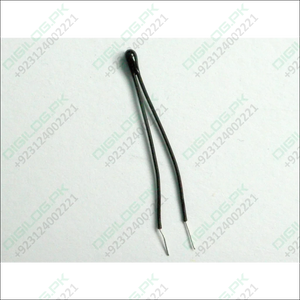100k Precision Ntc Thermistor in Pakistan
Guaranteed Safe Checkout


100k Precision Ntc Thermistor in Pakistan
A 100k Precision Ntc Thermistor is a type of resistor whose resistance is dependent on temperature, more so than in standard resistors. The word is a portmanteau of thermal and resistor. Thermistors are widely used as inrush current limiters, temperature sensors (negative temperature coefficient or NTC type typically), self-resetting overcurrent protectors, and self-regulating heating elements (positive temperature coefficient or PTC type typically).
Features:
- Features an extremely small B-value tolerance and resistance
- When used in temperature measurements the thermistor requires no adjustment between control circuit and sensor. This ensures a temperature precision of ±0.3°C
- Rated power 10mW at 25°C
- R (Ω) at 25°C: 100.0K ± 1%
- B-value 25°-85°C: 4665K ± 1%
- Dissipation Factor: 2
- Thermal Time Constant: 15
- Operating Temperature Range °C: –50°C to +110°C
Thermistors are of two opposite fundamental types:
- With NTC thermistors, resistance decreases as temperature rises. An NTC is commonly used as a temperature sensor, or in series with a circuit as an inrush current limiter.
- With PTC thermistors, resistance increases as temperature rises. PTC thermistors are commonly install in series with a circuit and used to protect against overcurrent conditions, as resettable fuses.
Thermistors differ from resistance temperature detectors (RTDs) in that the material used in a thermistor is generally a ceramic or polymer, while RTDs use pure metals. The thermistors are in the form of beads, rods, and discs but RTDs are in different shapes and sizes.
The temperature response is also different; RTDs are useful over larger temperature ranges, while thermistors typically achieve a greater precision within a limited temperature range, typically −90 °C to 130 °C.[1]




